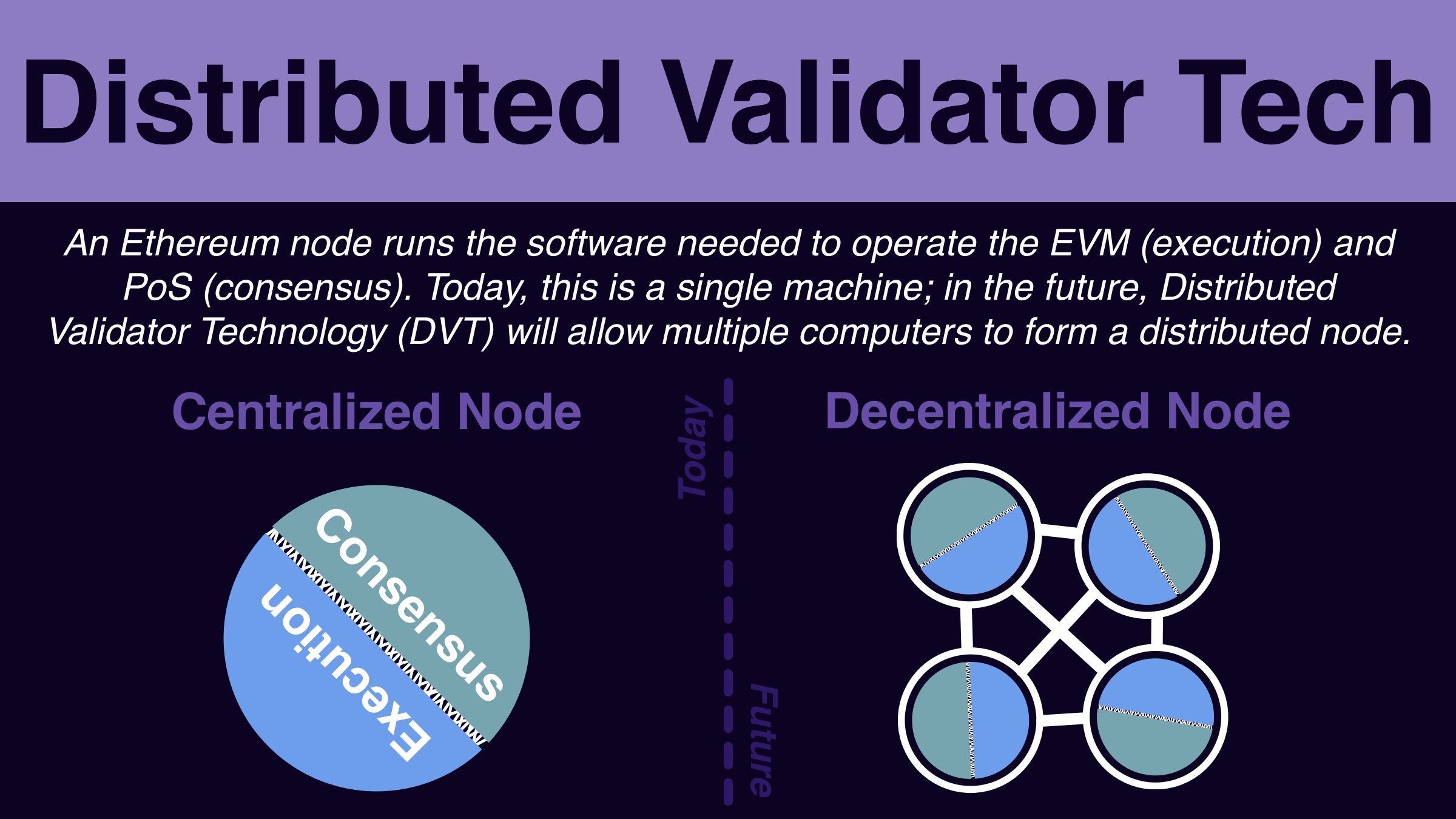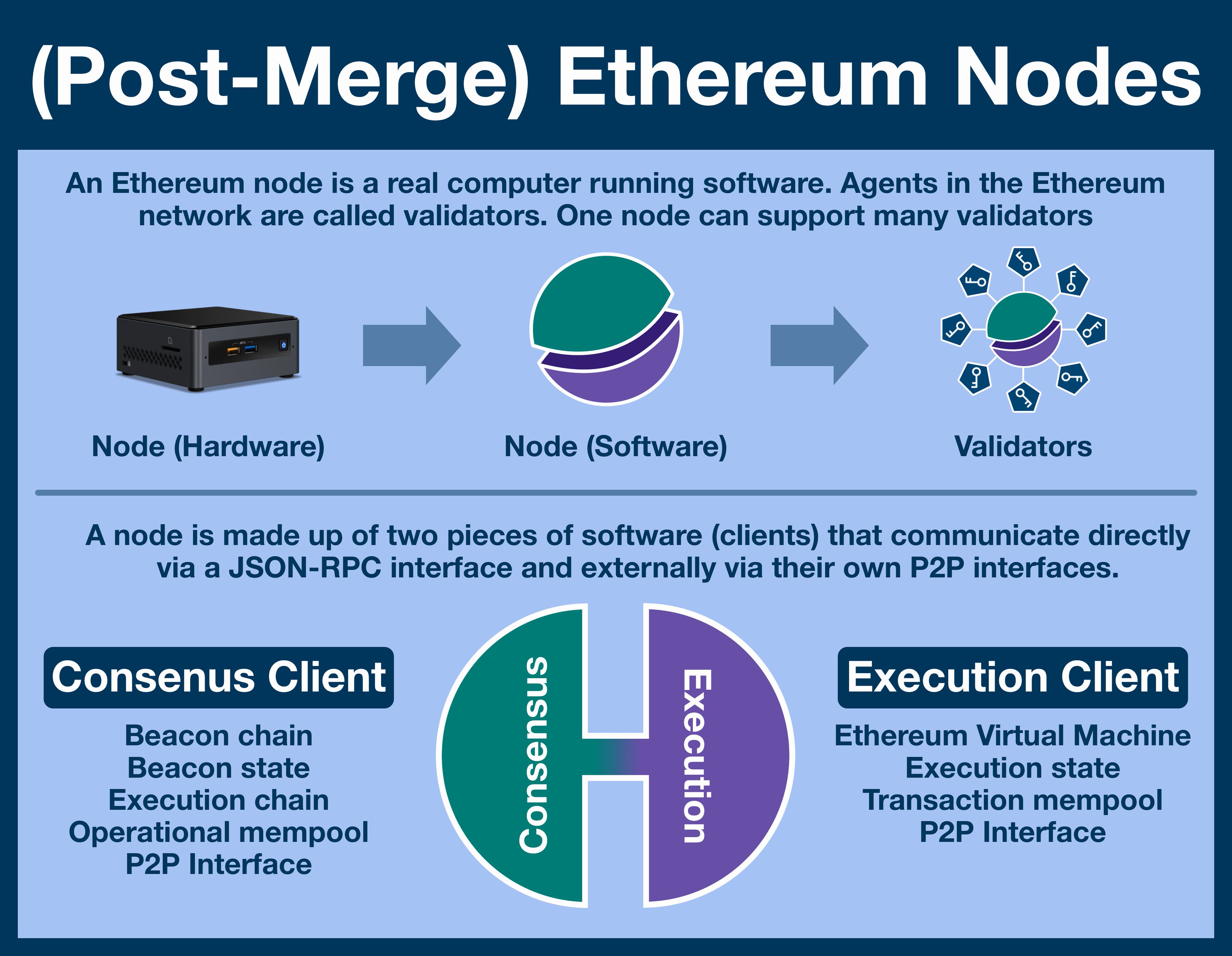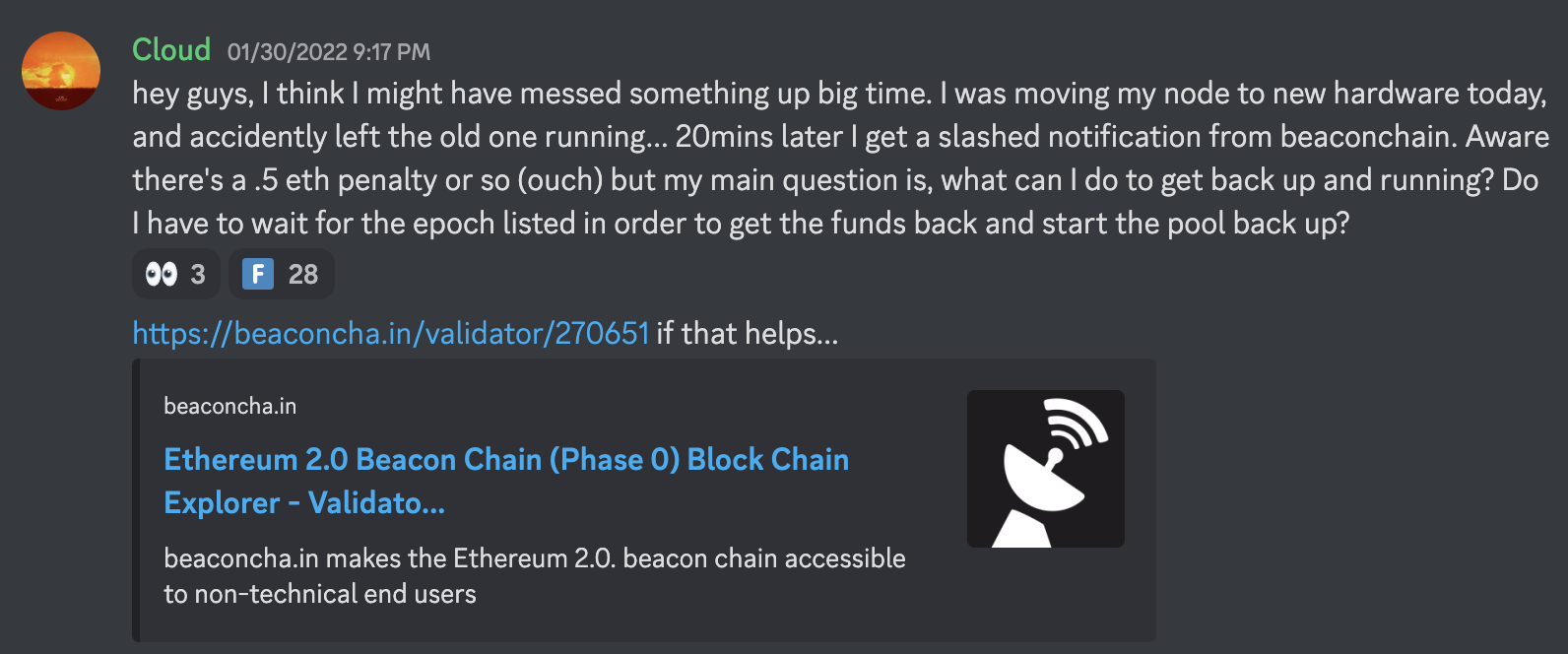
¶ Distributed Validator Technology (DVT)
¶ The World Computer
Ethereum is the World Computer, a single, globally shared computing platform that exists in the space between a network of 1,000s of computers (nodes).
These nodes are real computers in the real world, communicating directly from peer to peer.
The purpose of the greater Ethereum apparatus is to offer a single shared computing platform - the Ethereum Virtual Machine (EVM).
The EVM provides the context for transactions (computation); everything you "do" on-chain happens within the EVM.
Each node runs a local version of the EVM, which is then held perfectly in sync with every other copy of the EVM through a process called Proof of Stake (PoS).
Any individual EVM is a window into the shared state of the World Computer.
¶ Ethereum Node

Under the hood, each node is running two pieces of software:
- an execution client (eg Geth, Nethermind ), which holds the EVM
- a consensus client (eg Nimbus, Lighthouse), which monitors PoS and secures Ethereum
A node can exist without staking any ETH (although it wont earn any rewards).
When a node operator stakes (exactly) 32 ETH, their node creates a new validator, which begins participating in PoS.
A single node can support many (100+) validators.
In summary:
- a node is a real-world computer that operates Ethereum software; the Ethereum network stays in constant contact, keeping the EVM securely in sync
- a validator is a virtual entity, operated by a node, that exists within Ethereum and participates in PoS
¶ Resilient Ethereum
This is the system we have today; it works just fine! The World Computer is resilient because of the network of 1,000s of nodes. There are very few events that would affect every node.
But on an individual basis? Ethereum nodes are not that resistant to failure.
Let's take a simple example: let's imagine you're a home-staker and the power goes out for a few hours.
During the time your node is offline, you are incurring penalties (deducted the equivalent amount you would have earned over that time).
If you're only offline for a few hours, it wont take long for your node to re-sync with the head of the blockchain. But the longer you're offline, the longer it will take.
For the record, a full re-sync takes days.
During all this time you're incurring penalties.
For a home-staker this is bad enough, but imagine you're a huge staking-as-a-service provider like Lido Finance or Coinbase.
Bad luck at a single data center or a poor configuration file could have ramifications that ripple through De-Fi.
Now, you might suggest just running a backup node - if anything happens to the primary then you can just load the private keys into the backup and resume validating.
But with today's technology, this is a risk unto itself.

¶ Distributed Validator Technology
Enter the technology of the future: Distributed Validator Technology (DVT).
Think of a (regular) node as a computing package consisting of a consensus and execution client. A DVT node will have multiple consensus and execution clients spread across multiple machines.
Each time 32 ETH is deployed to the Ethereum deposit contract, a DVT cluster of n members will come together to generate a m-of-n shared validator key (m < n) .
Every time its time for that validator key to participate in PoS, at least m members must agree.
From the perspective of the protocol, all Ethereum cares is that every validator key participates once (and only once) at their designated turn.
DVT is the cryptography that allows us to safely distribute this responsibility across a broader group of actors.
Let's return to home staking, but now with DVT. Let's say that you, me, and WenMoon spin up a DVT cluster. Let's include Coinbase as a fallback, just in case.
Now even if the power's out in Southern California, we can all rest easy knowing we are still validating.
DVT gives Ethereum tools it needs to continue decentralizing, further cementing its credibly neutral position as the settlement layer of the internet.
But DVT is just a technology; there are lots of different ways we might see it implemented.
Let's look at two projects.
¶ Obol Network

Obol Network is a project implementing DVT, recently raising a lot of money to put their plan into action (congrats!!!).
The best way to understand Obol is to begin with a node. A vanilla node runs an execution and consensus client; an Obol node will add a 3rd client.
The Charon client acts as coordination layer between each cluster.
Each member-node will independently process each block, acting out the responsibilities granted to the cluster's validator key. The Charon node will reach a consensus and submit a single joint submission.
Obol Network is not yet live, but you can get a great understanding just by seeing the screenshots of their DVT launchpad.
Pick your cluster size, add the operator addresses, pick the number of validators, deploy.
¶ SSV Network

The other project racing to deploy DVT technology is SSV Network.
And I mean racing! They just announced a $50MM (!!!) ecosystem fund (also congrats!!! Huge things happening in the DVT space).
SSV Network uses the same tech, but really shines in the operator network it has brought together.
People interested in deploying validators will bring their ETH to SSV, who will create a DVT cluster from 4 of its operators. The magic of DVT happens behind the scenes.
¶ Looking Forward
But that's just the beginning; DVT is not just about creating more resilient @ethereum nodes, its about creating true conceptual distinction between a node and a validator.
Once decoupled, we can really start to dig into a node.
Or more specifically, build it up.
Need an example? One of the core technologies needed to enable Danksharding requires advanced elliptic curve cryptography run on every block.
Computations that seemed daunting in an Ethereum node are much more manageable in a DVT cluster.
¶ Resources
Source Material - Twitter Link